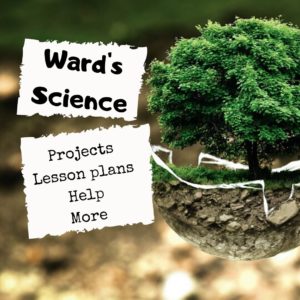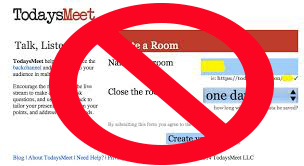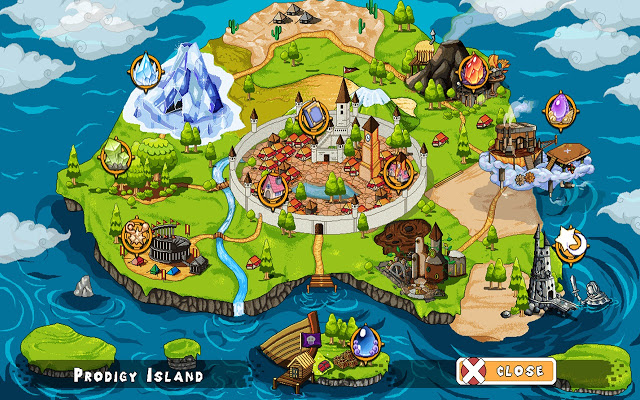 One of the most difficult skills to teach in school is problem solving. I can’t tell you how many kids–and parents–ask me, “How do I get an A.” My answer: “By thinking,” which oddly confuses them. We talk about what that means–problem solving, critical analysis, logical thinking–but often, that sounds hard to them–too hard. They want an easier way.
One of the most difficult skills to teach in school is problem solving. I can’t tell you how many kids–and parents–ask me, “How do I get an A.” My answer: “By thinking,” which oddly confuses them. We talk about what that means–problem solving, critical analysis, logical thinking–but often, that sounds hard to them–too hard. They want an easier way.
Why is that?
Basically, it’s because there aren’t enough education opportunities that require that sort of skill and those there are, usually rhyme with ‘math’ or ‘science’ which to many kids are “just too complicated”.
Enter STEM–Science, Technology, Engineering, and Mathematics.
“I don’t think schools can manage without coding and STEM. In Finland, we have had coding in the curriculum starting in the first grade; it is not taught separately, but through the thinking of various subjects.” –Anneli Rautiainen, Head of Innovation Unit at Finnish National Agency for Education
Coding, robotics, and experimentation–integral pieces of STEM–give students the best start possible to the rest of their lives. They are a toolkit of life skills such as problem-solving, coding and thinking. 93% of teachers (in America) believe these sorts of thinking skills in K-12 are critical.
Nothing promotes these better than STEM. Done right, STEM turns the confusing part of ‘thinking’ into fun. I found a partner in my STEM projects. It’s called Ward’s Science.
 Who is Ward’s Science
Who is Ward’s Science
Even after 144 years, Ward’s Science continues to be a leading provider of a full range of science products, kits, and resources for AP Science, Biology, Chemistry, Digital Science, Earth Science, Physics, and more for elementary-age students through High School (and beyond)–including Makerspace environments. Ward’s Science is known to its customers and the industry as the complete solution for materials supporting classroom science subjects. They not only offer project supplies but lesson plans, curricula, how-to videos, tips and tricks, personalized help, and podcasts. They even offer interesting extras like “How to choose a 3D printer”, “Connecting your Makerspace to your curriculum”, and “How to get funding for a robotics program”. Curricula are aligned with NGSS, TEKS, and other states and many of the kits are officially licensed by Science Olympiad. They even offer grant services to support school science programs.
What I really like about Ward’s Science
Ward’s Science makes it easy to find engaging, age-appropriate STEM resources, even if you aren’t quite sure what you want. The website is clean, simple to maneuver, and easy to understand. You type in what you’re looking for and get options. No ads. No animations. Just content.
Some services I didn’t expect and that would be difficult to find in other stores–virtual or physical–are:
- histology services–schools can send tissues to Ward’s Science and have them placed on slides quickly and professionally
- custom geology services–a collection of minerals and rocks to match educators’ teaching needs
- custom kits–organize, label, package, and ship materials exactly as a teacher needs them for their classes, everything in one kit
- delivery of live (or perishable) materials–shipped just in time for use so they’re fresh and healthy
Customer service includes not only troubleshooting help but access to scientists at Ward’s Science’s onsite science lab via email, phone, or video chat, all happy to help you with decisions and projects, assistance with ordering, and questions.
Another feature I like is called Ward’s World. In this section of the website, Ward’s Science shares spectacular projects that will energize and excite students such as “Halloween fun with chemical reactions”, “The periodic table of candy–a chemistry lesson plan”, “Physics of the fidget spinner (for elementary and middle school”, “6 live specimens that make great classroom pets”, and “A fun way to teach pH”. Activities and lesson plans are organized by subject (chemistry, biology, geology, physics, and STEM), grade level, and resource type (activity, lesson plan, or video).
One more amazing offering from Ward’s Science is professional development resources. This comes to you on their YouTube channel with more videos than I could count on a lot of science topics such as 3D printers, probes, tarantulas, introductions to a variety of products, quantum dots, and so much more. Visit the YouTube channel for a full listing.
For more detail on the breadth of Ward’s Science offerings, try these links:
- Ward’s Grants and Funding Services for Teachers
- 2019 Ward’s Science Catalog
- 2019 Ward’s Science STEM Catalog
- 2019 Ward’s Healthcare & Medical Education Catalog
To give you an example of the types of products offered by Ward’s Science, I evaluated two:
Botley the Coding Robot
Learning Resources’ Botley™ the Coding Robot is a compact two-eyed blocky robot on wheels. The 77-piece classroom set includes Botley the Coding Robot (no assembly required), a starter guide, programming challenges, a remote programmer, robot arms, coding cards, obstacle course pieces, and everything teachers need to introduce early coding fundamentals to students 5-9. Ready to use right out of the box, Botley™ helps students master logic, critical thinking, and other STEM skills with no screen time required–no app, tablet, or phone.
How do you use it
Getting started is pretty simple. Unbox Botley the Coding Robot. Make sure the AAA batteries in the remote control and the robot are fresh and working. Lay out the coding cards with what you wish the robot to do–move forward, back, turn, or any number of other commands. Then, with the handset, program Botley to follow your program. Once students master simple moves, turn on Botley’s object detection function that avoids objects in its path, instigate a loop command for repeated coding functions, and have it navigate an obstacle course using the black-line-following mode. Want more? Check the included instruction booklet for lots of ideas.
Overall, Botley is an easy-to-use, friendly robot that will even talk to kids!
Crazy Circuits With Squishy Circuits
I admit, when I first received this kit, I didn’t get the name–Crazy Circuits with Squishy Circuits. I couldn’t get my brain around all those words until I unwrapped the box and pulled the parts out. Then I got it: This had a ton of promise. If you’ve ever made Play Dough at home or in science class and used it as conductors and insulators–that’s the squishy part. When you poke circuits that light up or run motors or a bunch of other stuff into the dough–that’s the crazy part. With this relatively inexpensive kit, a wide age range of students learn about seemingly complicated topics such as insulators, conductors, resistance, and parallel and series circuits.
This is ready to go out of the box which means no soldering required.
How to Use it
The Crazy Circuits With Squishy Circuits kit includes six containers of colored squishy dough–some conductive and some insulating–and a variety of Crazy Circuits Chips. You don’t have to make anything or buy anything else. Detailed directions, project guides, educational resources, and videos can be found online in the Ward’s Science database. Crazy Circuits are compatible with LEGO™ and similar brick building systems.
If you’re wondering how squishy dough can conduct electricity, watch this 4-minute TED Talk. Though the video shows how to make the dough, you don’t have to do that. Ward’s Science sends it as part of the kit. You just attach the circuits, motors, and conductors, and let your creativity flow:
***
Ward’s Science doesn’t pop up right away in a Google search for ‘STEM supplies’ so bookmark this review and share it with fellow science teachers. You’re going to want to find Ward’s Science the next time you’re looking for supplies. You can reach their social media platforms here:
- https://www.facebook.
com/wardsci - https://www.twitter.com/
WardsScience - https://www.youtube.com/
user/wardsci - https://www.pinterest.
com/wardsscience/ - https://www.instagram.
com/wardsscience/ - #wardsworld @WardsScience
WardsWorld15TT
Offer valid on web only at wardsci.com. To activate offer, use promo code at checkout. Offer expires 11/31/19. Free shipping includes standard ground shipping only and excludes items with hazardous shipping; standard hazardous shipping fees will apply. Unless otherwise specified, contract discounts and special offers may not be applied to any item priced with a final digit of ‘9’ (i.e. $6.99; $10.09; $129.99.) Offer excludes Somso models due to custom nature of the product. Offer excludes all Triumph Board products. Promotional discounts also may not be combined with other offers, discounts, contracts, or promotions. For more details, visit wardsci.com/terms. Selected items may be or contain chemicals, live materials, or hazardous materials and may be restricted for purchasing by educational institutions only. To purchase restricted items, please log into wardsci.com with your Full Web Profile, or create a new Full Web Profile here using your school’s Shipping Account Number. A full profile also allows you to pay with purchase orders, receive tax exemptions, contract pricing (if applicable), and other advanced features. Don’t know your Shipping Account Number or not sure what it is? We can help. Email wardscs@vwr.com or Click to Chat on the profile registration page and a Ward’s Science Representative will help you locate your Shipping Account Number or apply for a new one.)
–While I received these products to review, my opinions are my own.
Jacqui Murray has been teaching K-18 technology for 30 years. She is the editor/author of over a hundred tech ed resources including a K-12 technology curriculum, K-8 keyboard curriculum, K-8 Digital Citizenship curriculum. She is an adjunct professor in tech ed, Master Teacher, webmaster for four blogs, an Amazon Vine Voice, CSTA presentation reviewer, freelance journalist on tech ed topics, contributor to NEA Today and author of the tech thrillers, To Hunt a Sub and Twenty-four Days. You can find her resources at Structured Learning.




































